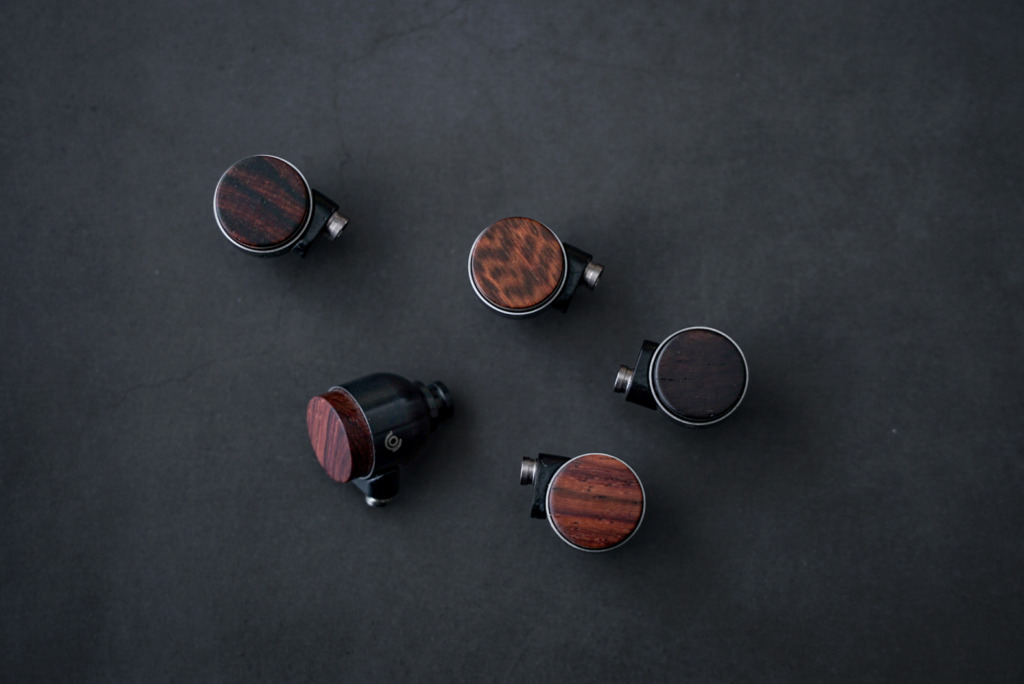This time, I would like to explain about the combination of 9iNE and wood, and the difference in sound depending on the wood, although I have not produced many of them yet.
The wood versions of 9iNE that I have produced so far are as follows.
Rosewood (Ching-chan, Indian rosewood, Honduran rosewood)
Snakewood
African blackwood (Granadilla)
Pink Ivory
Cocobolo
Lignum vitae
Padauk
Jindai Cedar (Bog-wood)
Zebrawood
Ziricote
Beefwood
The 9iNE has a different sound tendency from the other current 634EARS models, so I think the wood compatibility is a little different.
I hope that the difference in sound can be used as a reference for those who will order in the future.
9iNE’s sound characteristics.)
Some of the characteristics that distinguish 9iNE from the sound of other 634EARS models include the following.
1) Lots of sound in the lowest and mid-low range.
2)The high frequency range should be sharp and thin, and the low frequency range should be thick in sound.
These two characteristics are also where the choice of wood changes.
Rosewood)
Examples of production are Indian rosewood, Ching-chan, and Honduran rosewood.
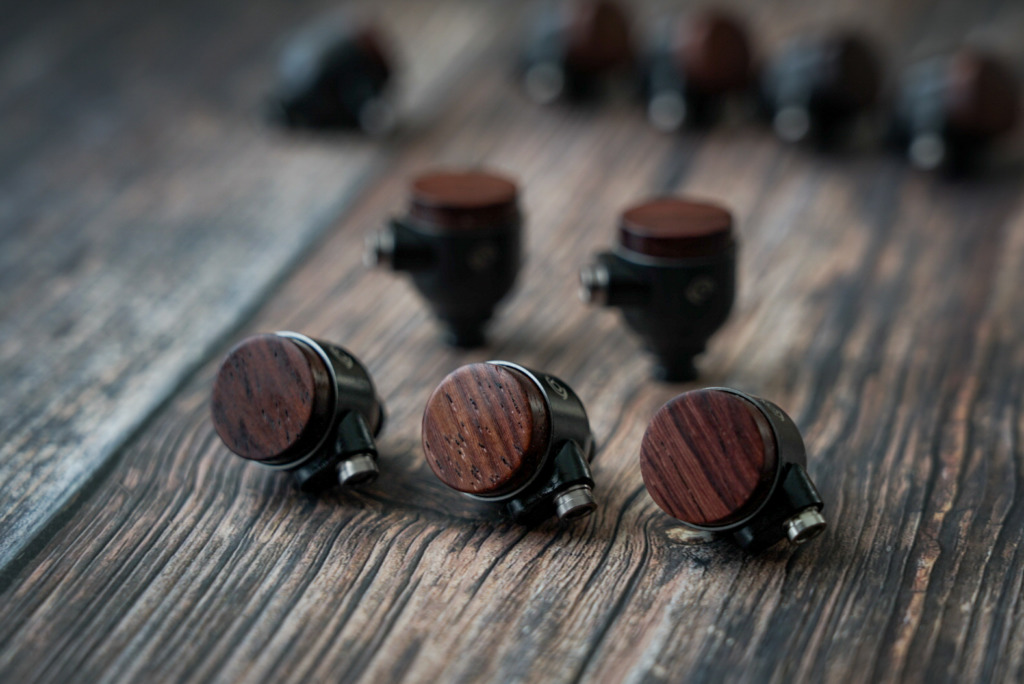

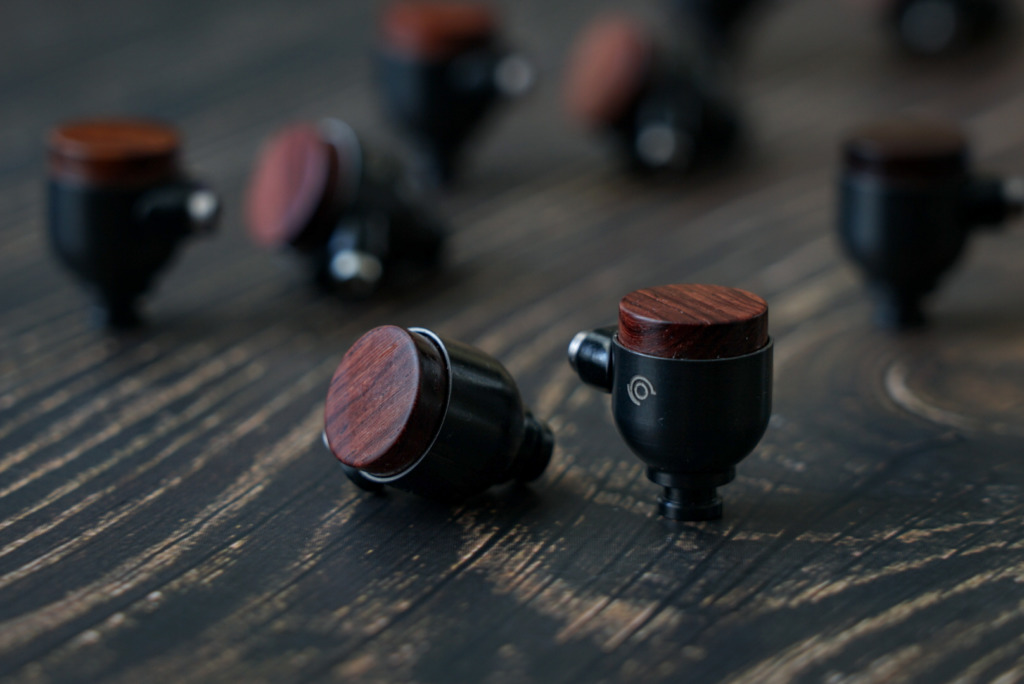
What was common to the rosewood was that the tone was warm and the mid to low range was well-defined.
The sound is a little thicker and milder, but the sound is well-coordinated from low to high frequencies, and there is a sense of unity in the tone.
In a word, I think it can be called “wood-like. However, it is not so tight or clear, so it depends on your taste.
If Indian rosewood is the standard rosewood, Ching-Chan is a little brighter and clearer, and Honduran rosewood is a little more subdued.
However, there is a great deal of individual variation in rosewood, even within the same type of wood.
Similar woods)
Granadillo, Bolivian rosewood, satine, etc.
Rosewood type wood)
Warm and mild.
The sound has a sense of cohesion and tonal unity.
The lowest range and the lower middle range are high.
Individual differences are large.
Oily wood)
Examples of production are Cocobolo and Lignum Vitae.
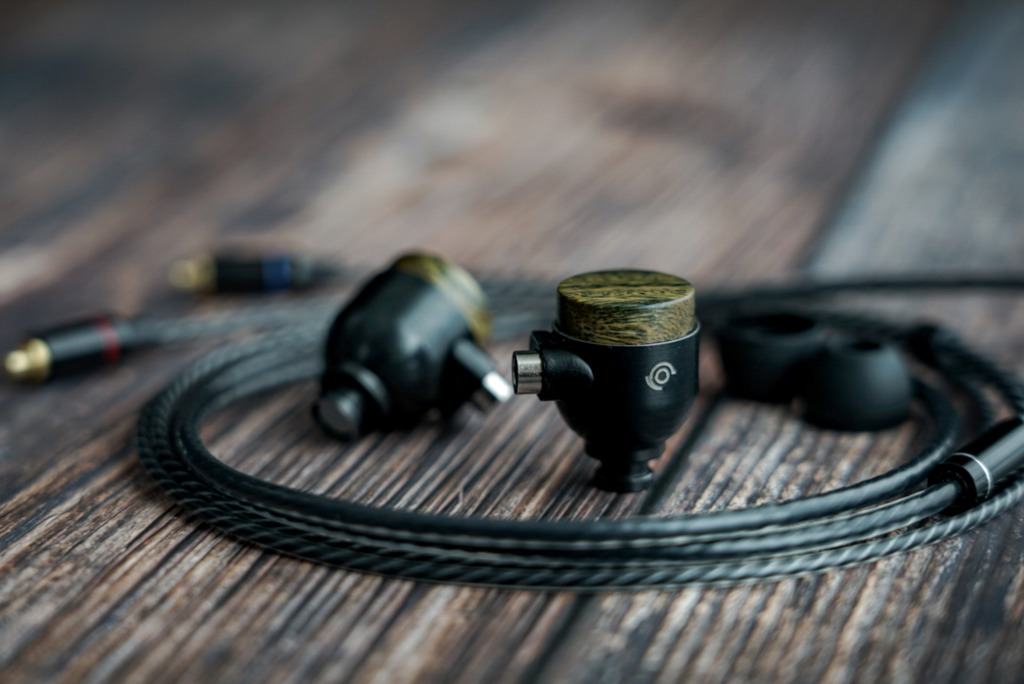
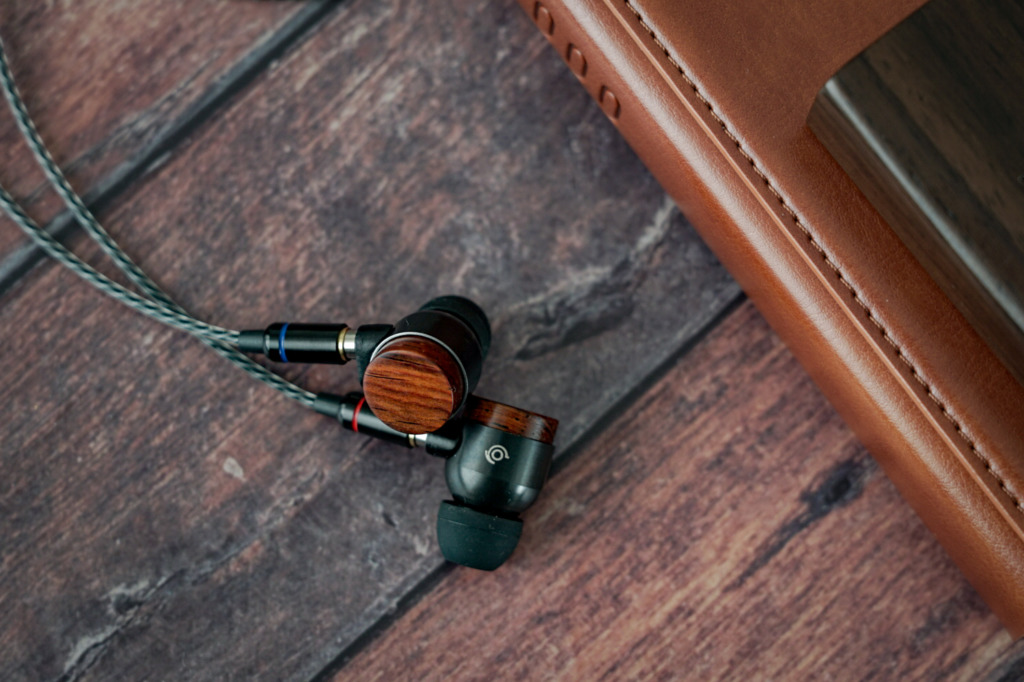
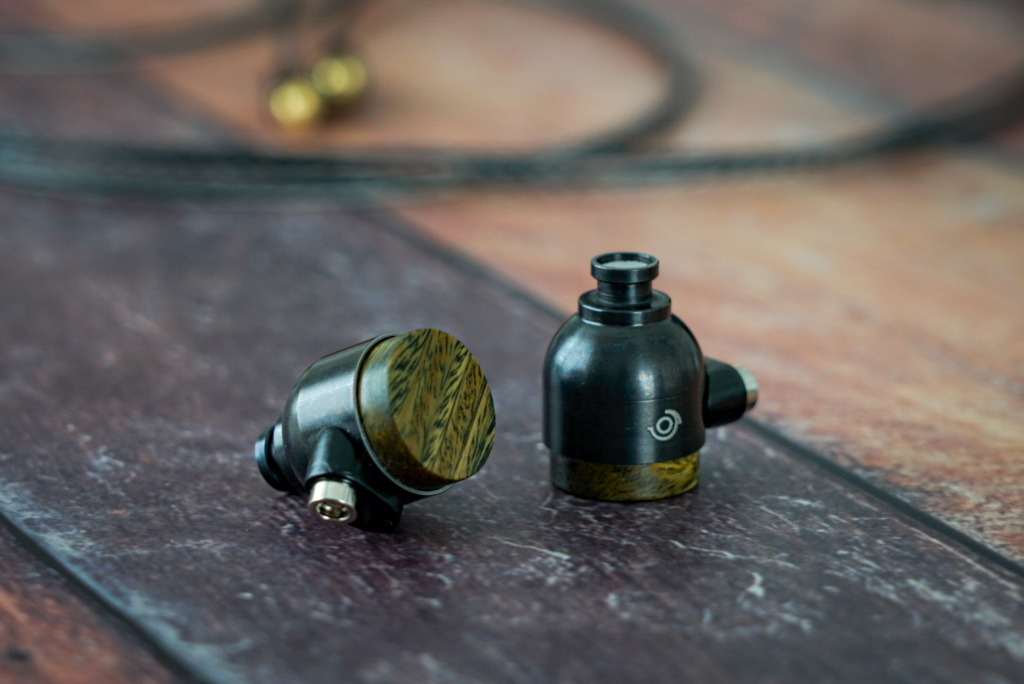
These woods are a little heavier and oilier than rosewood.
They have a darker, stronger sound than rosewood, but the highs tend to be milder and the edges a little rounder.
However, the density of the sound is higher, so the mids and lows are stronger.
The hardness of these woods varies greatly depending on the oil content and drying conditions, so there is a great deal of individual variation.
Similar woods)
Olive wood, Palo Santo, African sandalwood, etc.
Oily wood)
Strong sound. Slightly dark sound.
High frequencies are mild and the edges are a little rounded.
The mid-bass is rich.
Individual wood has a big difference.
Harder and heavier wood)
Examples of production are snakewood, African blackwood, and pink ivory.
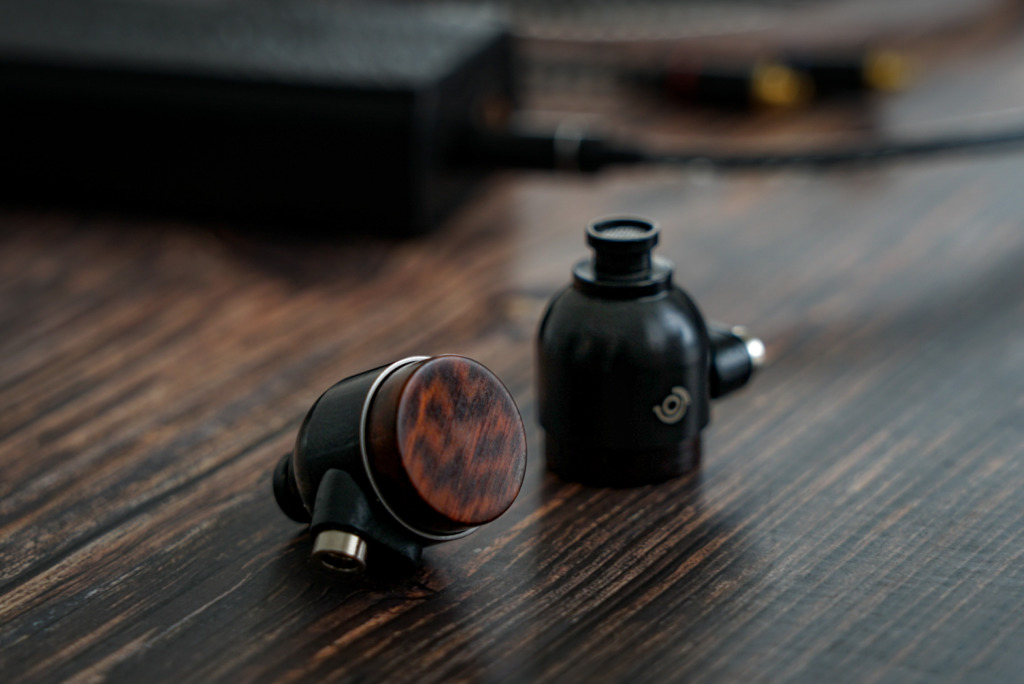
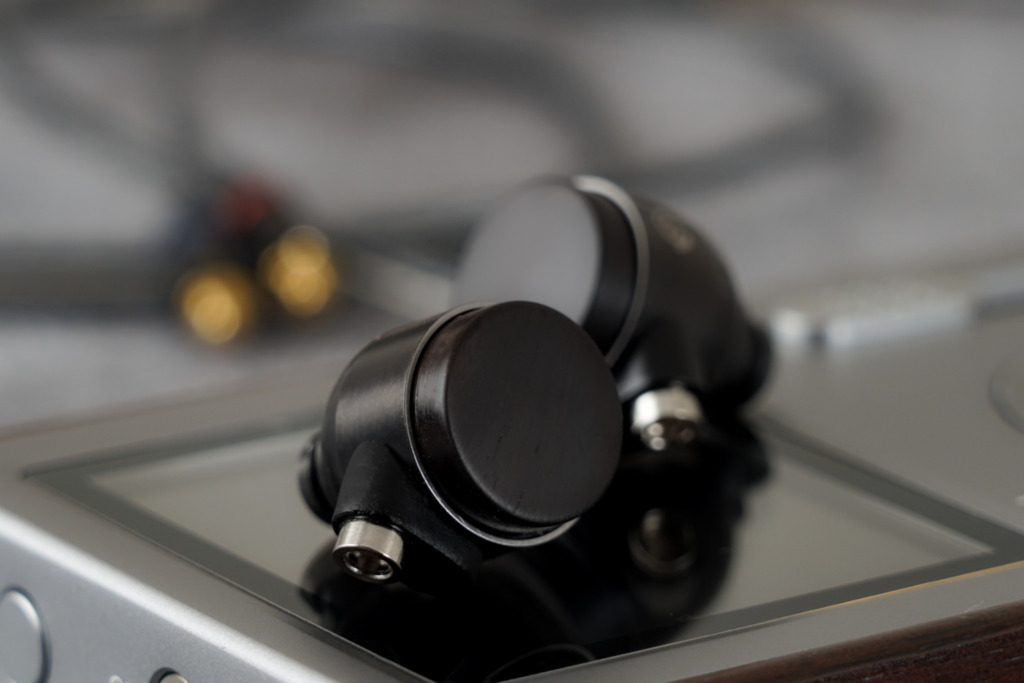
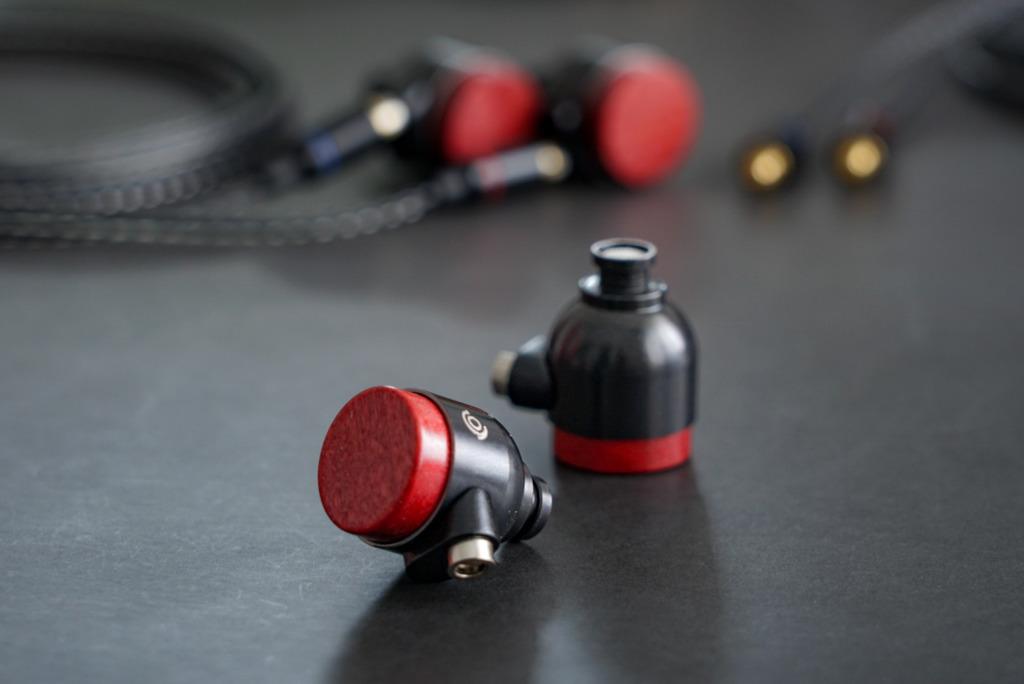
These are very hard and heavy woods. The hardness is especially top level.
The sound is sharp and tight. The bass is also smart for 9iNE.
The highs have a thin line and high contrast sound, and the mids and lows are very tight for 9iNE. The mids and lows are very tight for a 9iNE. The edges are clear and the sound is a bit hard.
Similar woods)
Ebony type, desert ironwood, etc.
Harder and heavier wood)
Sharp, tight, hard sound with clear edges.
Low range is relatively smart.
Highs are thin and high contrast.
Low and mid-range are relatively clean.
Hard wood with not so high specific gravity)
Examples of production are zebrawood, ziricote, beefwood, Padauk, Jindai Cedar (Bog-wood).

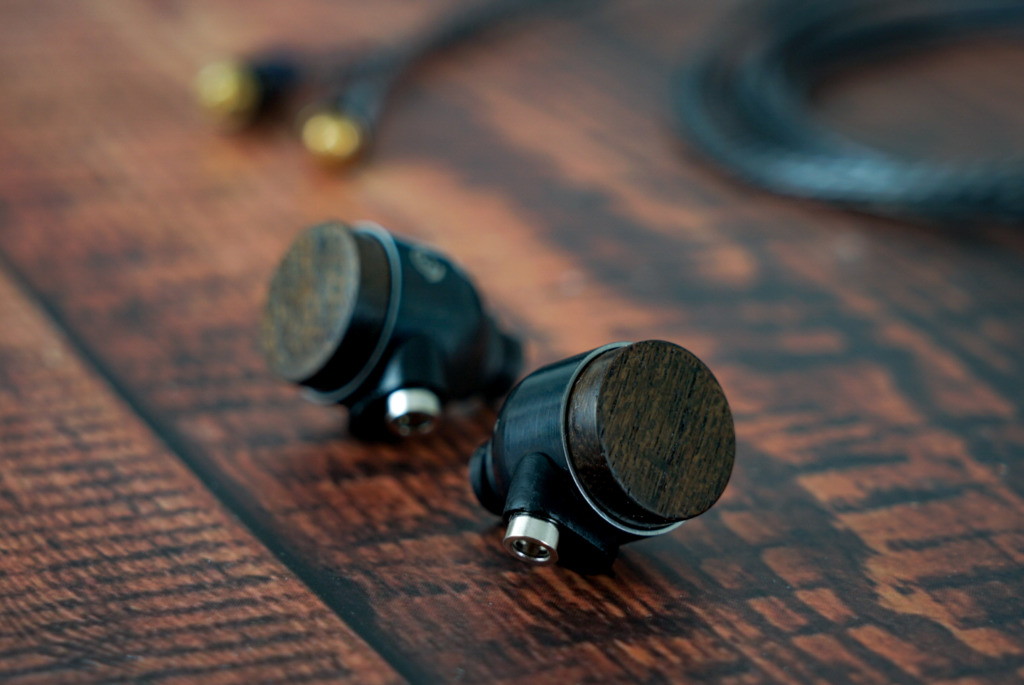


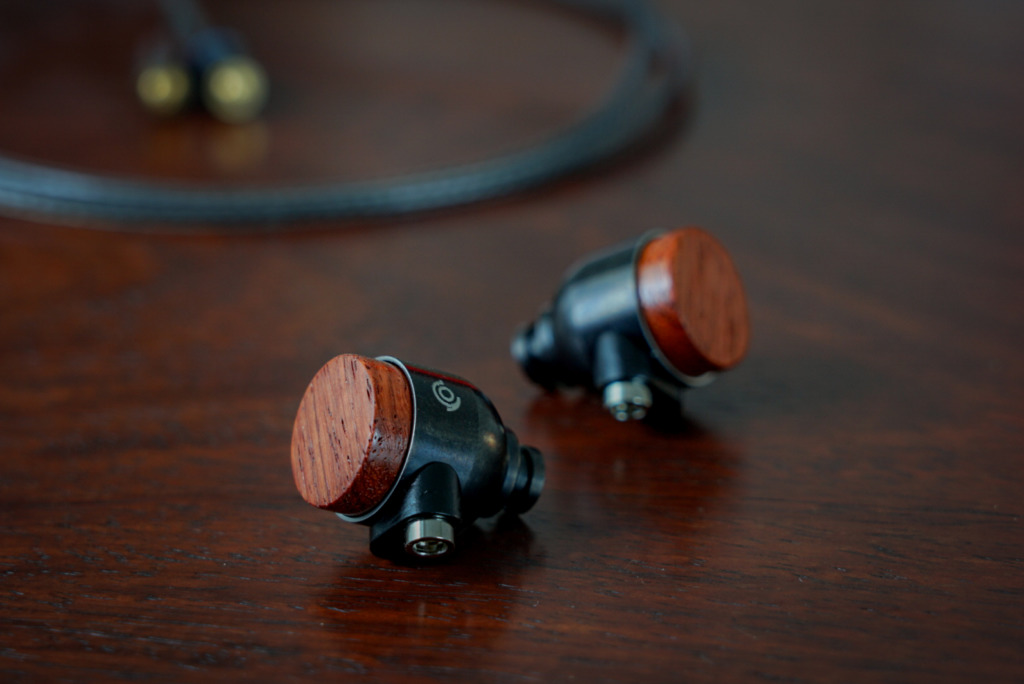
These are hard woods, though not so high in specific gravity.
The sound is light and crisp. The bass is also clear for 9iNE. The density of the sound is not so high, but it is sharp and bright. It does not feel as warm as other woods.
This wood was a little undesirable to combine with LOAK-T and MIROAK because of its lightness of sound and low sound density, but its light and clean sound is a great match for this 9iNE.
If you want a clean and light sound while maintaining the characteristics of 9iNE, these woods are very good.
Especially, Jindai cedar(Bog-wood) is very hard and has a very slim sound.
However, this type of wood is very sharp and bright in the high frequency range, which makes a slight difference in sound temperature from the low frequency range.
The highs are sharp and cool, while the lows are warm.
So the overall sense of unity may be less than with rosewood, for example.
Similar woods)
Purple heart (slightly heavier than these), Yakusugi (even lighter than these), etc.
Hard wood with not so high specific gravity)
Light and sharp sound.
Sharp and bright sound.
The low frequency range is relatively clear.
There is a slight difference in tonal temperature between the high and low frequencies.
Summary)
Little by little, I am beginning to see some of the characteristics of wood in 9iNE.
To use a slightly difficult word, the higher the “elastic modulus/density” value, the cleaner the sound tends to be.
Even if these values are the same, if the original specific gravity is higher, the sound will be thicker.
If you want a warm, mild sound that is typical of wood, choose rosewood or a wood with more oil content to get a sound similar to that tendency.
If you compare the specific gravity and Young’s modulus of a wood not listed here with those listed here, you can get an idea of its sound tendency.
However, since there are individual differences among woods, the sound will vary greatly depending on the condition of the wood at the time. If you would like to know more details including the condition of the wood I have in stock, please contact me when you place your order.
